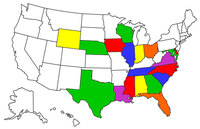
Originally Posted by
yakman2020

What would be the necessary process for building an experimental IFR GPS?
Thanks to ADS B we have a number of relatively inexpensive TSO'ed IFR GPS WAAS sensors, so it looks like the "only" part that would need to be experimental would be the actual receiver waypoint sequencing and error display. This would be a matter of software, which I can produce and could be produced as part of an open source project so everybody could use/help over time.
There are plenty of non-TSO'ed ADIs, EHSIs, PFDs etc being used in IFR conditions, so there must be some sort of customary process for producing and verifying these things, but every time I talk to anyone about it they tell me that its "too hard" without getting specific.
Anyone at EAA etc have some specific info? With the cost of IFR GPS being so very high these days, it seems an interesting thing to explore.



 Reply With Quote
Reply With Quote



